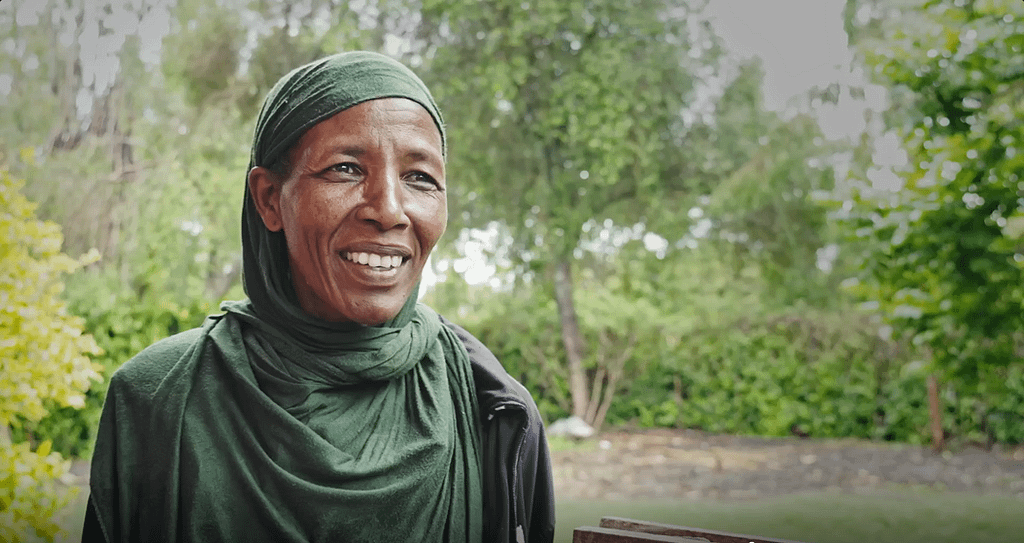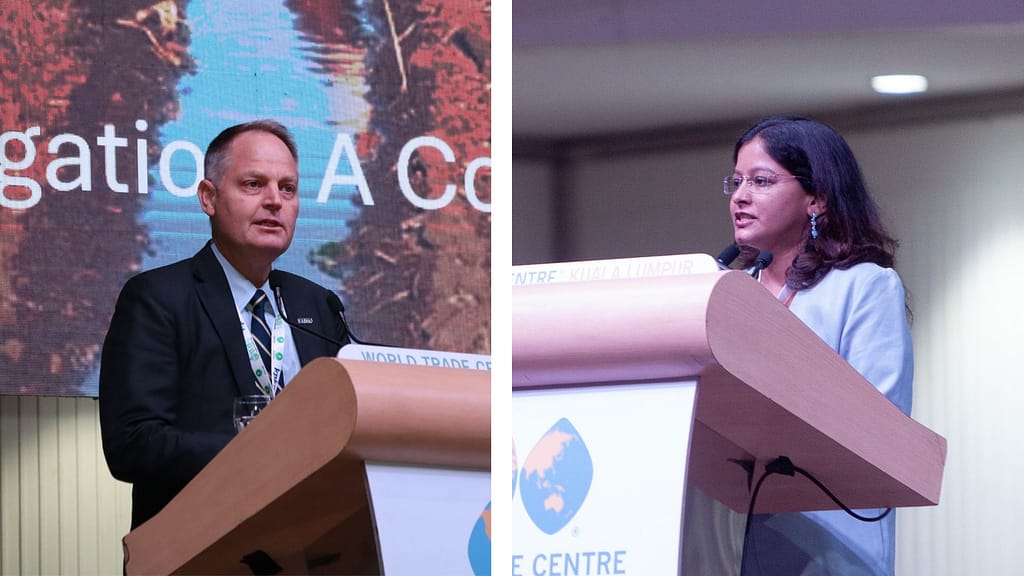Is irrigation a sunset industry? This question set the stage for the 4th World Irrigation Forum held in Kuala Lumpur, Malaysia. In a world where climate and water cycles are increasingly unpredictable, the question is no longer if irrigation systems should evolve — but how. The answer lies with young people who are reimagining irrigation with innovation, inclusion and equality at its core.
Irrigation has been one of humanity’s greatest innovations, supporting the emergence of civilizations over millennia, turning dry landscapes into breadbaskets and ensuring food security for billions.
But today, the irrigation sector is at a crossroads. The systems we inherited were built for a different era, an era of more predictable rainfall, lower population pressures and fewer competing demands on water.
That world no longer exists.
Today, climate change is intensifying extremes and food demands are increasing and shifting. The demand for irrigation water — for food, fiber and fuel is also growing. At the same time, irrigation infrastructure is aging and its benefits are rarely equitable, especially for resource-poor smallholder farmers including women and those living in rural communities.
Irrigation as we know it has unintended consequences. Soil salinization is making land less fertile, waterlogging is causing crops to die and groundwater depletion is affecting long-term water availability. Another challenge is the now well-known Jevons Paradox where improvements in irrigation efficiency are encouraging farmers to expand irrigated areas or switch to water-intensive crops, ultimately increasing total water use.
Future-fit irrigation is not just water for crops
We now face a choice: either irrigation can continue along familiar paths, or it transforms into a future-fit system. A system that is capable of serving agricultural economic development, industry, ecosystems and communities, equitably, sustainably and resilient to climate change.
As highlighted in a video shared during the 4th World Irrigation Forum on September 8, 2025, young people across the globe are already telling us why transforming irrigation is critical.
In Ethiopia, Fikiru Selemon, a young smallholder farmer, describes irrigation as the “guarantor of our food security.” Another farmer, Amele Zeleke said “irrigation has transformed my life”.

Around the world, irrigation provides a lifeline for millions of farmers like Selemon and Zeleke. It provides income opportunities, supports livelihoods, and reduces hunger and malnutrition by ensuring that food is available in times of drought.
In Pakistan, Haseeb Zafar, a hydrologist, says that “at a time when water resources are declining, we do not have the luxury of losing 60% of water during conveyance. We need to shift towards high efficient and high precision methods.”
Kanwal Waqar, a gender equality and social inclusion specialist in Pakistan, highlights that an “inclusive irrigation system will open up opportunities and enhance decision-making power for more than 70% of the women engaged in agriculture as a source of livelihood”.
Valerija Stanoevska, a hydro-engineer from Macedonia, describes their ideal future-fit irrigation system as “one that truly serves farmers.”
Blanca Sánchez, a rural entrepreneur from Mexico, believes that “to adapt and evolve irrigation systems, we need to diversify water sources and communities need to learn and have access to technology.”
Vidya Mandave, a researcher in India who shared the stage with me at the forum, stresses that “irrigation is not just about moving water from point A to point B. It is about the people who control resources, the people who benefit and the communities around the system. Reimagining irrigation means designing for people, with people.”
Young innovators are already transforming irrigation
Across the world, young innovators are proving that irrigation is far from obsolete. It is being reinvented to serve farmers, communities and ecosystems in a more equitable, sustainable and climate resilient way.
In Albania, youth are building smart, solar-powered systems that use real-time data to dispense water only when needed, while in Nepal, they are developing grid-integrated solar irrigation that lowers costs and even generates extra income by feeding energy back into the grid. In Sri Lanka, youth are advocating for nature-based solutions that restore ecosystems while sustaining agriculture. In Ethiopia, they are bundling solar pumps with composting to improve soil fertility, soil moisture and productivity.
Marvin Nii Adom Armah, senior business development and account manager – corporate services at Farmerline speaks about innovative approaches to irrigation and how these efforts are empowering smallholder farmers.
Irrigation is no longer about only infrastructure
These efforts show that to be future-fit, irrigation must no longer be seen as “infrastructure.” It must be reimagined as part of an integrated water system, one that ensures its financial sustainability. It must be embedded with storage and natural infrastructure, so it not only delivers water, but replenishes aquifers, restores wetlands and buffers floods and droughts. It must treat drainage and wastewater as assets, not byproducts, reusing it to support agriculture, ecosystems or even urban needs. And it must provide services beyond agriculture, including flood protection, groundwater recharge, biodiversity corridors and renewable energy.
Agriculture and water security rely on the full water cycle. Both blue and green water. Sustainably managed ecosystems that regulate terrestrial moisture and enhance green water storage are therefore essential to support rain-fed systems and enable strategic water use across seasons and uses.

Meeting these multi-fold challenges and delivering future-fit irrigation is not only an engineering challenge. It is a socio-technical transformation, requiring new governance, new mindsets and new skills.
In Mandave’s words, “it leaves us with both responsibility and opportunity. A responsibility to admit that business as usual is no longer viable. And an opportunity to reshape irrigation as a cornerstone of resilience, food security, thriving economies and sustainability.”
She continues that “this crossroads is not a place to pause. It is a place to choose. Let us choose to make irrigation future-fit. Let us embed it in broader water systems, harness nature-based solutions, see drainage as a resource and open irrigation to multiple services with people at its center. And most importantly, let us listen to, invest in and partner with young people. Because the future of irrigation is not behind us — it is already taking shape in our hands. Together, we can go beyond the sunset, toward a resilient, food-secure and sustainable future, with youth at the helm.”
—
This blog is based on a keynote speech delivered by Mark Smith, director general of IWMI, at the 4th World Irrigation Forum on September 8, 2025 in Kuala Lumpur, Malaysia, together with Vidya Mandave, research officer at IWMI.

